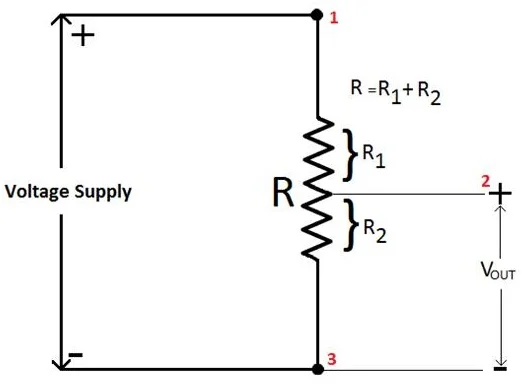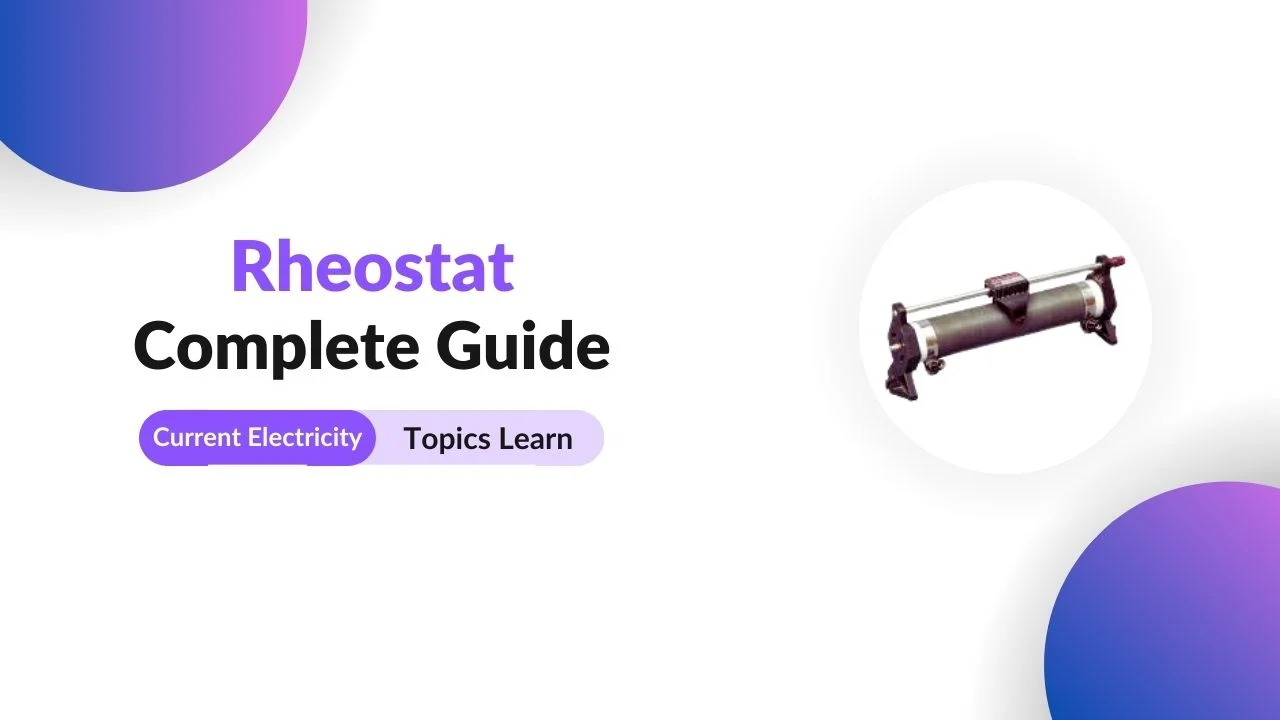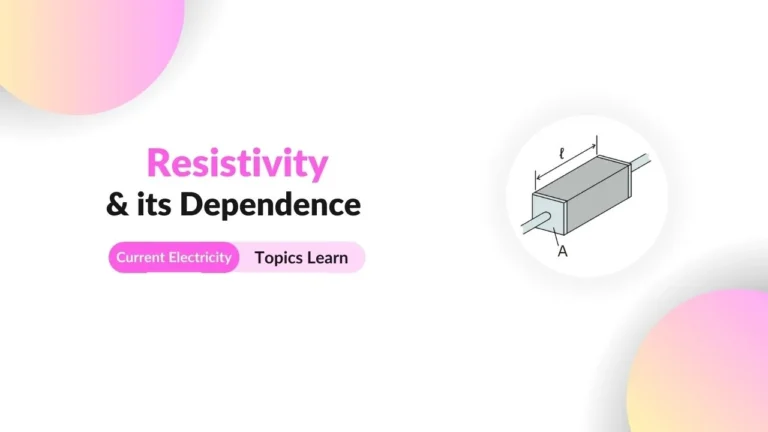Rheostat is a wire wound variable resistance.

Construction
It consists of a high resistance wire wound over an insulating cylinder. The ends of the resistance are connected to the two fixed terminals A and B. Third terminal C is attached to a sliding contact which can be moved over the wire.
Related material:
- Electric Current
- Ohm’s Law | Ohmic & Non-Ohmic
- Resistivity and its Dependence
- Electric Force vs Gravitational Force
- Applications of Electrostatics
- Geometrical Optics Full Chapter MCQs
- Kirchoff’s Laws
Rheostat Function/Uses
Rheostat can be used as:
- Variable Resistor
- Potential Divider
1. Variable Resistor
A Rheostat acts as a variable resistor when terminal A and sliding terminal C are connected in circuit. In this way resistance between A and C is used. If C is moved away from A, resistance increase and vice versa.
2. Potential Divider
The circuit of potential divider is shown:

Battery supplies voltage V across resistor R current is given by: I = V/R
Now voltage across BC = current x resistance
VBC = Ir
= (V/R) (r)
‘r’ is resistance of wire between BC, which varies as sliding contact C moves. Now VBC changes with ‘r’.




Awesome post.
Yes, quite